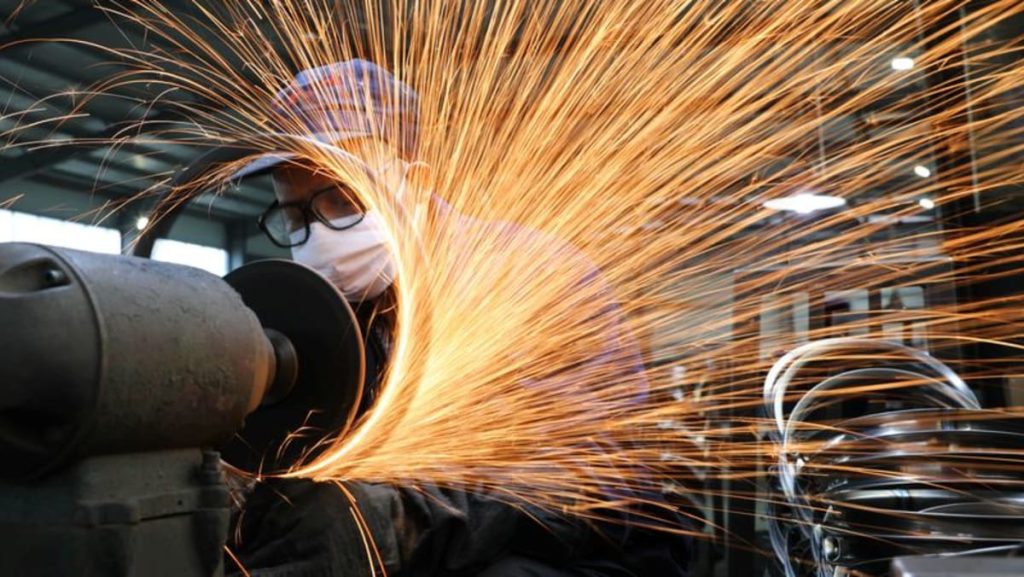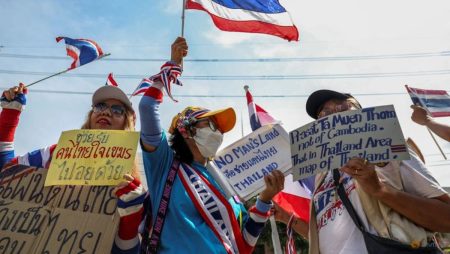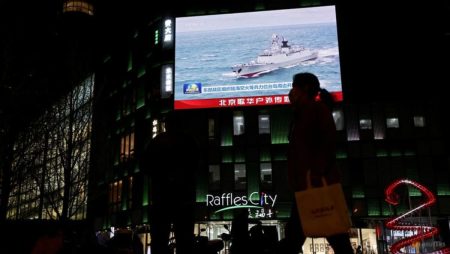Asia’s manufacturing sector experienced a slowdown in January 2025, burdened by weakening demand from China and the looming threat of escalated tariffs imposed by then-US President Donald Trump. Private surveys conducted across the region painted a concerning picture, with declining factory activity and dampened business sentiment contributing to a darkening economic outlook. This downturn coincided with global market turbulence triggered by Trump’s announcement of sweeping tariffs on imports from Mexico, Canada, and China, further exacerbating anxieties about the future of international trade. The combination of China’s economic deceleration and the unpredictability of Trump’s trade policies presented significant challenges for Asian policymakers, particularly given the region’s heavy reliance on Chinese consumption and global trade flows.
China, the world’s second-largest economy, experienced slower factory activity growth in January. A private sector survey revealed a concerning decline in staffing levels, reaching a near five-year low, directly attributable to escalating trade uncertainties. While this result was slightly better than an earlier official survey that indicated a contraction in manufacturing activity, it nonetheless signaled a weakening industrial sector. This slowdown in China, coupled with the persistent threat of US tariffs, had a ripple effect across the region. Japan, a key player in the global manufacturing landscape, experienced its sharpest decline in factory activity in ten months, with business confidence plummeting to a more than two-year low.
The impact of China’s economic slowdown and the US tariff threats extended beyond Japan. While South Korea managed to register marginal expansion in manufacturing activity, partially recovering from the political turmoil of the previous month, other economies in the region struggled. Taiwan and the Philippines experienced a slowdown in factory activity, reflecting the increasingly pessimistic outlook for global trade. This widespread weakening of the manufacturing sector underscored the interconnectedness of Asian economies and their vulnerability to external shocks, particularly those originating from major trading partners like China and the United States.
Experts attributed the widespread caution among Asian businesses to the uncertainty surrounding Trump’s trade policies and the perceived fragility of the Chinese economy. Concerns were raised about the potential for job losses in China, particularly among younger generations, which could further dampen consumer spending and hinder economic recovery. The potential for US tariffs to fuel inflation and strengthen the dollar also posed a significant threat to emerging Asian currencies, further complicating the situation for regional manufacturers. In a global environment of shrinking trade, these factors combined to create a challenging landscape for Asian economies heavily reliant on exports.
The Caixin/S&P Global manufacturing purchasing managers’ index (PMI) for China, a key indicator of factory activity, dipped to 50.1 in January, barely above the 50-mark that separates growth from contraction. This represented a four-month low and missed analysts’ forecasts, underscoring the growing concerns about the health of the Chinese economy. Japan’s final au Jibun Bank PMI painted an even bleaker picture, plunging to 48.7, marking the seventh consecutive month below the 50.0 threshold. This sustained contraction in Japanese manufacturing activity highlighted the depth of the challenges facing the country’s industrial sector.
While South Korea managed to eke out marginal growth in manufacturing activity, its PMI rising to 50.3 in January, this was largely attributed to a rebound from the political instability that had plagued the country in the previous month. The fourth quarter of 2024 had seen minimal economic growth in South Korea due to a political crisis surrounding President Yoon Suk Yeol, further highlighting the vulnerability of the economy to domestic political factors. Elsewhere in the region, Vietnam’s PMI fell to 48.9, indicating a contraction in manufacturing activity, while Taiwan’s PMI dropped to 51.1, signaling a slowdown. The Philippines also experienced a decline in manufacturing activity, with its PMI falling to 52.3. These figures collectively painted a picture of widespread weakness in the Asian manufacturing sector, driven by a confluence of external and internal factors. The combined impact of slowing Chinese demand, US trade policy uncertainty, and domestic political challenges created a challenging environment for businesses across the region, raising concerns about the near-term economic outlook.










